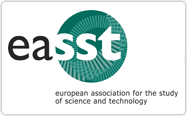Composite Method
The Absent Presence of Race in Experimental Film and Facial Composite Drawing
Abstract
This paper explores how race comes to matter in the practice of police facial composite drawing. The confidential nature of criminal investigations prevented us from using research material collected through observations of police practices. The authors developed an experimental film project in collaboration with two forensic artists to illuminate the production of (visual) differences in the context of facial composite drawing. We recorded the process using a variety of technologies to produce different materializations of the drawing event. The experimental setting created a reflexive space for all participants, albeit not in the same way. Tinkering with the materials generated allowed us to analyze the enactment and slipperiness of race in practice. This paper combines written text with experimental montage to address three different practices through which race takes shape in the process of making facial composite drawings: 1) touching as describing; 2) layering and surfacing; and 3) articulating the common.
Downloads
Published
Versions
- 2021-09-15 (2)
- 2021-03-09 (1)
How to Cite
Copyright (c) 2021 Ryanne Bleumink, Lisette Jong, Ildikó Zonga Plájás

This work is licensed under a Creative Commons Attribution 4.0 International License.





